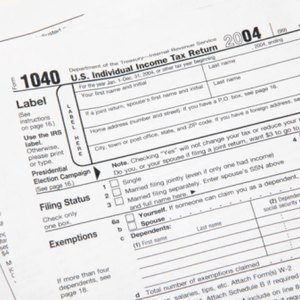
You can move money between retirement accounts by doing a rollover. There are specific requirements and reporting that must be completed to prevent penalties.
You report rollovers to and from IRAs on IRS Form 1040. The way you do so depends on the method of rollover, of which there are three:
- Direct transfer: A rollover from the custodian of a qualified retirement plan (i.e., 401(k), 403(b), 457) directly to the custodian of an IRA (traditional or Roth).
- Trustee-to-trustee transfer: A rollover from one IRA custodian to another. Can be a traditional IRA to traditional IRA transfer, a traditional IRA to Roth IRA conversion or a Roth IRA to Roth IRA transfer.
- IRA rollover of a cash distribution: If you receive a cash distribution from a qualified retirement plan or IRA, you have 60 days to roll over part or all via a deposit to an IRA. Cash rollovers from qualified employer plans or IRAs to a traditional IRA are tax- and penalty-free. Rollovers from an employer-designated Roth account to a Roth IRA are also tax- and penalty-free. A cash rollover from a traditional employer account to a Roth IRA, known as a Roth conversion, is taxable but not subject to a penalty for early withdrawal.
It’s important to accurately report rollovers so that you avoid being taxed incorrectly.
Read More: Can I Add Money to a Rollover IRA?
Information From Custodians
To help you file your taxes, custodians will send you and the IRS Form 1099-R in January listing your previous-year distributions from employee retirement plans and IRAs. The distributions are coded to indicate the nature of the distribution, including rollovers and Roth conversions.
Custodians also send out Form 5498 recapping your retirement plan contributions and rollovers. However, the form doesn’t report IRA-to-IRA tax-free transfers.
You report your rollovers on IRS Form 1040 or Form 1040NR. The operative lines on Form 1040 for reporting rollovers are Line 4 and Line 5. You report tax-deductible contributions to your qualified plans and IRAs on Schedule 1 of Form 1040. Rollovers are not subject to the contribution limits set by the IRS.
IRA to IRA Rollovers
You use Form 1040 Line 4 to report IRA distributions and rollovers. It consists of Line 4a, IRA Distributions, and Line 4b, Taxable Amount. You enter the total amount of your IRA distributions for the year on Line 4a.
Line 4b reports the amount of the distribution that is taxable. The taxable portion of a distribution from a traditional IRA is the amount not rolled over to another traditional IRA or qualified plan (nor returned to the same IRA), including any amount converted to a Roth IRA. You enter $0 in Line 4b if you rolled over the entire distribution from your IRA.
You cannot roll over a Roth IRA except to another Roth IRA. If you took a Roth IRA distribution, any earnings that are not rolled over to another Roth IRA (which you enter on Line 4b) might be subject to income tax as well as an early withdrawal penalty, entered separately on Form 5329. The tax and penalty apply if you distribute Roth IRA earnings within five years of opening the account, or if you are younger than 59 1/2 and don’t qualify for an exception.
If your IRA distribution is fully or partially rolled over, print the word “Rollover” next to Line 4b.
Read More: Roth vs. Traditional IRA for Young Investors
Pension to IRA Rollovers
You report your distributions from a qualified retirement plan, including distributions rolled into an IRA, on Form 1040 Line 5a, Pensions and Annuities. The Taxable Amount is entered on Line 5b. If you rolled money from your retirement plan to an IRA (or another retirement plan), print “Rollover” next to Line 5b.
Generally, a direct transfer from a qualified retirement plan to a traditional IRA is tax- and penalty-free, as are transfers from a Roth-designated retirement account to a Roth IRA. Any non-Roth distributions converted to a Roth IRA are taxable but not subject to a penalty for withdrawals before age 59 ½.
If you withdraw money from your retirement plan, you have 60 days to roll it over into an IRA or another qualified plan. Otherwise, it will be treated as a taxable distribution (except for rollovers from designated Roth accounts to a Roth IRA).
Read More: Do I Have 90 Days to Roll Over My 401k?
References
Writer Bio
Eric Bank is a senior business, finance and real estate writer, freelancing since 2002. He has written thousands of articles about business, finance, insurance, real estate, investing, annuities, taxes, credit repair, accounting and student loans. Eric writes articles, blogs and SEO-friendly website content for dozens of clients worldwide, including get.com, badcredit.org and valuepenguin.com. Eric holds two Master's Degrees -- in Business Administration and in Finance. His website is ericbank.com.

